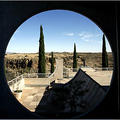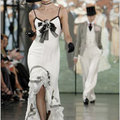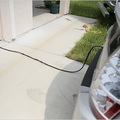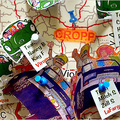THE room at the Premier Hotel in Times Square looked like any other. But before I stepped inside, the hotel had gone to extraordinary lengths to purify it. In a seven-step process to cut down on bacteria, pollen, dust, dust mites and other possible irritants, everything in the room, from the curtains to the carpeting to the air-conditioning units, was cleaned and treated with an antimicrobial agent that attacks bacteria.
A cartridge containing tea tree oil, a natural antiseptic and disinfectant, was installed in the heating and cooling unit. The room underwent a four-hour ozone shock treatment to kill any remaining living organisms and zap associated odors. A mist was applied to surfaces to make it difficult for bacteria to grow. Mattresses and pillowcases were covered with dust-mite protectors.
I had entered what Pure Solutions NA, a company hired by the Premier, calls its Pure Room.
This much cleanliness might seem a bit neurotic. But it’s not enough anymore for hotels seeking health-conscious patrons to serve organic cuisine and offer all-natural bath products. As more hotels try to set themselves apart, a new amenity is emerging: the hypoallergenic hotel room.
The concept isn’t aimed just at the allergic, but also at guests who are concerned with what might be called the ick factor. “The whole thing is geared toward ‘What about the guy before me?’ ” said Tom Kammerer, a managing director at Thayer Lodging, a private hotel real estate investment firm in Annapolis, Md. Thayer Lodging, like the Premier, is working with Pure Solutions, based in Cheektowaga, N.Y. Thayer is converting about 10 percent of the rooms at each of its 13 hotels into Pure rooms by the end of this year. “That’s why we have encasements over our pillows and mattresses. The natural human body sheds 150,000 cells a day. After a year or so it gets — you know. We’re trying to cut down on breathing in other people’s stuff.”
From the Fairmont Vancouver Airport hotel to the Mandarin Oriental in Miami, hotels are doing everything from replacing feather duvets to installing air purifiers in guest rooms. Some are ripping out carpets and drapes, which tend to harbor dust and trap odors, and replacing them with smooth surfaces. Others are making less visible changes, outfitting pillows and mattresses with liners that help contain dust mites and swabbing phones, doorknobs and other surfaces with antimicrobial agents.
Hilton and Millennium Hotels, each of which is testing the concept in a few hotels, said they might consider expanding it to more properties depending on demand. NYLO Hotels, a new brand scheduled to open its first hotel in Plano, Tex., in November, plans to offer at least one floor of allergy-friendly rooms at each of its locations.
Hotels say it’s not uncommon to get special requests from guests with allergies. “We get a lot of requests for special blankets, special pillows, no spray in the rooms,” said Maureen O’Brien, director of sales at the Premier, a Millennium Hotel, which spent $30,000 to convert three floors to Pure rooms this year. The hotel is also using a line of natural bath products in those rooms for guests with sensitive skin and noses.
But mostly, hotels see the creation of super-clean rooms as a way to gain an edge now that amenities like plush beds and flat-screen TVs have often become standard.
Thayer Lodging, unlike the Premier, is charging a 5 to 10 percent premium for Pure rooms — at hotels including Marriotts, Hilton Doubletrees and Wyndhams. “If all you’ve got is good service, and ‘Gee, my room was clean’ — well, you kind of expect that today,” Mr. Kammerer said. “We’re looking for things in our hotels that are extraordinary and give you a wow factor.”
I found the Pure room at the Premier hard to distinguish from a regular room until the room division director picked up the couch to reveal a large metal air filtration unit underneath. The room did have a distinctly fresh feeling, but it was difficult to tell whether that was from the air quality or just the result of a room temperature that was cooler than that of the hallway.
Some guests who battle allergies say there is a distinct difference. “I go to hotels all the time, and I’m allergic to everything in the whole room,” said Tim Dagit, a real estate developer from Philadelphia who has special air filters in his home to help manage his allergies. On a typical trip, Mr. Dagit said, he takes medication “to deal with excess dander and dust in the air” and spends about two hours tracking someone down to replace any down pillows and comforters in the room with something that doesn’t provoke his allergies. “It’s a total nightmare,” he said. “Every hotel I go to, be it the Ritz-Carlton or the Motel 6, same problem.”
That’s why Mr. Dagit was surprised when he checked into the Annapolis Marriott Waterfront in Annapolis, Md., last summer and was given a Pure room. “I slept great,” he said. “I had no problems. I was thrilled about it.” The $20 extra he was charged for the room was well worth it, he said. “Frankly,” he added, “I would have paid more.”
HOTELS say the demand is certainly there. In the first two months after the Fairmont Waterfront in Vancouver introduced a “featherless floor” in 2005, it was 87 percent full, the hotel said, compared with 70 percent occupancy in the hotel overall. The Hilton Chicago O’Hare Airport hotel was so pleased with the demand for two Enviro-Rooms created by Environmental Technology Solutions in Glen Ellyn, Ill., that it opened 11 more earlier this month.
Unlike Pure Solutions, which treats the existing hotel room, Environmental Technology Solutions renovates the space to create its Enviro-Rooms. Rugs are ripped out and replaced with hardwood floors, and curtains with wooden blinds, and the entire room, from the all-cotton linens on the bed to the special porous wallpaper, is designed with allergen-sensitive guests in mind.
There is no standard for what qualifies a room as hypoallergenic. Neither company claims its rooms are allergen-free. Pure Solutions advertises its Pure Room as “allergy-friendly,” while Environmental Technology Solutions says its Enviro-Room “reduces airborne and surface particulates.”
Allergy experts say most of the methods the hotel rooms are using, like the special pillow covers and rug removal, are in line with what might be recommended to parents of an asthmatic child. But some, like removing feather pillows or using tea tree oil, said Robert G. Hamilton, an allergy specialist and professor of medicine at Johns Hopkins University School of Medicine, will have “little impact in addressing the allergen issue.”
More hotels may be creating hypoallergenic hotel rooms in the future. In Connecticut, Representative Claire Janowski introduced a bill in this year’s General Assembly session to require hotels to offer allergy-friendly rooms. It was stalled this year, but she plans to propose it again in 2008.






